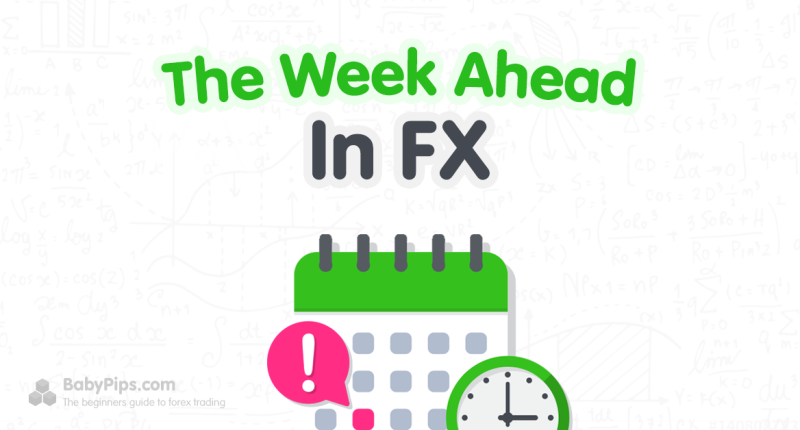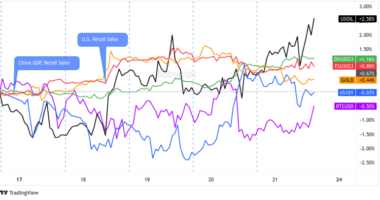
News traders are in for a busy week as we hear from FOUR major central banks about their September monetary policies.
We’ll also see potential market movers such as New Zealand’s GDP, Canada and the U.K.’s CPI data, and a bunch of PMI reports from around the world.
Before all that, ICYMI, I’ve written a quick recap of the market themes that pushed currency pairs around last week. Check it!
And now for the closely-watched economic indicators on the calendar this week:
Canada’s CPI report
We know from August’s release that Canada’s monthly and headline CPI came in hotter than expected while core figures remained stubbornly high in July.
On Tuesday at 12:30 pm GMT, the markets see the headline CPI slowing down from 0.6% to 0.3% while the annual rate might pick up from 3.3% to 3.9% and the core figure could speed up from 3.2% to 3.5%.
After the BOC paused its rates at 5.00% earlier this month, traders might be looking closely at the CPI reports to gauge if the Canadian central bank is likely to resume tightening anytime soon.
U.K.’s CPI report
July’s numbers told us that the U.K.’s annualized headline inflation cooled from 7.9% to 6.8% while core inflation remained at 6.9%.
Will consumer prices remain stubbornly high in August? On September 21 at 11:00 am GMT, analysts expect headline inflation to tick higher again, this time from 6.8% to 7.1% while the core figure slips from 6.9% to 6.7%.
Depending on how traders feel about the U.K. possibly needing even tighter monetary policies, GBP may take hits at signs of further BOE rate hikes.
FOMC statement
According to the CME FedWatch tool, the central bank is widely expected to leave its interest rates unchanged at around the 5.50% mark by September 20 at 6:00 pm GMT.
But more eyes will likely be on the Fed’s dot plot projections, which may or may not confirm the Fed penciling in another rate hike before the year ends. A presser 30 minutes after the decision’s release may also see some volatility.
If Fed members adjust their biases to reflect no more rate hikes this year, or if we see plans to cut rates early next year, then USD could lose some of its September gains or start longer-term downtrends against its major counterparts.
SNB’s monetary policy decision
In an interview in late June, Swiss National Bank (SNB) President Jordan shared that “SNB’s recent interest rate hike was very likely not quite enough to get a grip on inflation in Switzerland.” This came a few days after the central bank raised its interest rates by 25 basis points to 1.75%.
But that was in June. Since then, a bunch of other major central banks have raised their interest rates while Switzerland’s inflation increased by another 1.2% y/y in August.
On September 21 at 7:30 am GMT, market players expect the central bank to raise its interest rates further from 1.75% to 2.00%. A presser will most likely follow and, if we hear hawkish tones from the SNB, then CHF may boost its rep as an alternative to safe havens in the European region.








